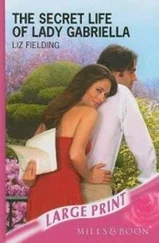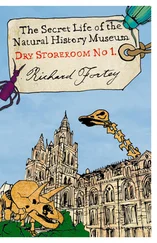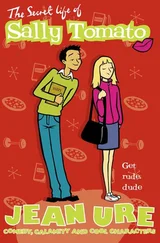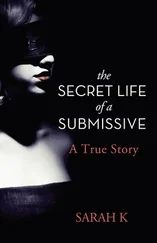Throughout the shoot, Jane and Marilyn got along famously, with the five-years-older Russell protective of the insecure Monroe in the way of a big sister. Often all it took for Marilyn to be coaxed out of her trailer was a word from Jane. “She would be afraid to come out, she was so shy,” Russell said, “but it was understandable in the sense that she never had to sing so much, dance so much. Then, of course, she had the acting teacher [Natasha Lytess] on set every moment, a woman who was such an annoyance, running Marilyn’s life the way she did. I’m sure Marilyn did not need her on this movie… she would have been fine without her, if only she had more confidence in herself.”
They may be just two little girls from Little Rock who come from the wrong side of the tracks, but Lorelei Lee (Monroe) and Dorothy Shaw (Russell) easily change their status to the right side of the tracks after they conquer Paris in search of a couple of men of means. Veteran director Howard Hawks guides the large cast through the tune-filled story of a beautiful blonde with a weakness for diamonds, and her equally lovely enabler. Lorelei’s erstwhile fiancé Esmond (Tommy Noonan) has financed the trip to Paris to test her fidelity. Suspicious of Lorelei’s motives, Esmond the elder hires private eye Ernie Malone (Elliott Reid) to spy on the girls and report any suspicious activity back to him. And there’s plenty to report, including charges leveled at Lorelei of grand larceny of a valuable tiara. Of course, she’s guilty, and it remains for a French judge to set things right, but not before Dorothy shakes things up by posing as Lorelei. When her true identity is called into question as she testifies in court, Jane Russell mounts a perfect impersonation of Marilyn’s Lorelei, which includes a devastating, dead-on version of “Diamonds Are a Girl’s Best Friend.”
Marilyn’s rendition of this song is the most lavish of all the production numbers in the film, again with choreography by Jack Cole, and with what seems like an army of tuxedoed chorus boys, one of whom turns out to be a teenage George Chakiris, with gray brushed into his temple hair. Though the picture was photographed with 35–millimeter film, studio head Daryl Zanuck ordered the “Diamonds” production number to be reshot later in CinemaScope for use in a demonstration of the new process, held on the Fox lot in March 1953. Zanuck told Daily Variety that the CinemaScope reshoot was done in three and a half hours, as opposed to the four days it took for the original version. That would stand to reason, considering the number had already been blocked and rehearsed.
What’s clear with this movie is not only Marilyn’s sense of humor about herself but also her ability as a comedic actress. Monroe biographer Donald Spoto put it this way: “She put a twist on sexiness. It was not something wicked and shameful and shocking and dirty and embarrassing. It was something which was terribly funny. And Marilyn enjoyed it.”
Hugh Hefner, founder of Playboy magazine, added, “In retrospect, although the fifties is clearly a time of very real political repression and social sexual repression, you can see those early signs of changing values, and Monroe was clearly a part of that.”
Gentlemen Prefer Blondes premiered on July 15, 1953, with both Jane’s and Marilyn’s hand- and footprints enshrined in the fore-court of Grauman’s Chinese Theatre. It opened nationwide three days later to great reviews and big box-office returns, earning more than $12 million in its initial run.
Gladys Threatens Grace
I n November 1953 Gladys Baker received a ticket, arranged and paid by Marilyn, for transportation from Florida back to Los Angeles. Grace Goddard had followed Marilyn’s direction to book the arrangements, but it was her own decision to have Gladys travel by rail, not air. She may have been attempting to delay her friend’s arrival in California since she would need to have her home prepared for it. Grace also needed to emotionally steel herself and her family for the possibility that Gladys might be bringing with her a trunkload of paranoia and confusion. She had heard from Berniece that Gladys had been having some “episodes.” The long train ride turned out to be a torment for Gladys. As soon as the cab pulled up in front of Grace’s house, she and Doc heard Gladys’s screams. They ran to the front window and saw the poor cabdriver take her bags from the trunk of his vehicle, drop them on the front lawn, get back into his cab, and speed off as quickly as he could. It appeared that he didn’t even wait to be paid! Gladys then marched toward the Goddards’ front door, shouting nonsensically about her awful train trip. “Torture!” she exclaimed. “Grace Goddard, you wanted to torture me, and you succeeded! Now it’s my turn.”
Grace told Doc to get away from the window so that they could pretend they weren’t home. Then she drew the curtains in a flash and ran for the telephone, dialing Marilyn’s number as quickly as she could. Marilyn happened to be home and having a meeting with an accountant named Wesley Miller who worked for Wright, Wright, Green & Wright, the law firm that represented Marilyn at the time. When Marilyn answered, Grace quickly explained what was going on, that Gladys had just pulled up and was frantic. She said that she had never seen her in such bad shape. Then she held the phone up to the front window so that Marilyn could hear her mother’s shouting: “I’ll show you torture, Grace! Open up this door!”
“I recall that Marilyn and Grace stayed on the phone for a time,” said Wesley Miller, “with Grace reporting Gladys’s every move. Marilyn said she hoped her mother would eventually calm down, and I think she did. However, from what I later gathered, when Grace walked toward the front porch, she could clearly hear Gladys speaking, as if in a one-sided conversation. She was mumbling something about being ‘put on a train like a child,’ with all of the other passengers staring at her for the entire trip. ‘Eyes everywhere, for days on end…’ is what Marilyn later told me she was repeating, nonstop.”
The story continued, as per the recollections of the principal players:
After whispering her report of the unfolding events, Grace stopped and listened. “Wait,” she said, “someone else is out there. Hold on.” Grace and Doc each peeked through a curtain and watched as a nearby resident, who had obviously heard the commotion, approached. Gladys greeted him angrily. The neighbor explained that he had grown concerned when he heard all the shouting. At that, Gladys became even more irate, asking if the man “owned” Los Angeles and demanding to know “is this your air I’m breathing, too?” Grace listened as Gladys’s voice trailed off. She then followed the man off the property. Doc ran to the kitchen and out the back door saying he would try to keep on eye on Gladys.
“Meanwhile, Marilyn asked Grace not to call the authorities, saying she would be right over,” recalled Wesley Miller. “ ‘Just don’t let her leave,’ she said of her mother before clicking off. I said, ‘You are not going there alone, Marilyn. I’m coming with you.’ And she said, ‘No. This has to do with me and my mother. I can handle it on my own.’ She then ran out of the house. I sat in her living room thinking, ‘Oh, I should definitely have insisted. I should have insisted…’ ”
Marilyn jumped into her car. After speeding through stoplights and weaving in and out of traffic, she finally reached her destination: a Los Angeles police precinct. She screeched onto a lot that was meant only for official vehicles.
“It’s not every day people came in that way,” explained a retired Los Angeles police officer. “When she got out, I actually drew my gun—but as soon as you saw her you knew who she was.”
Читать дальше












